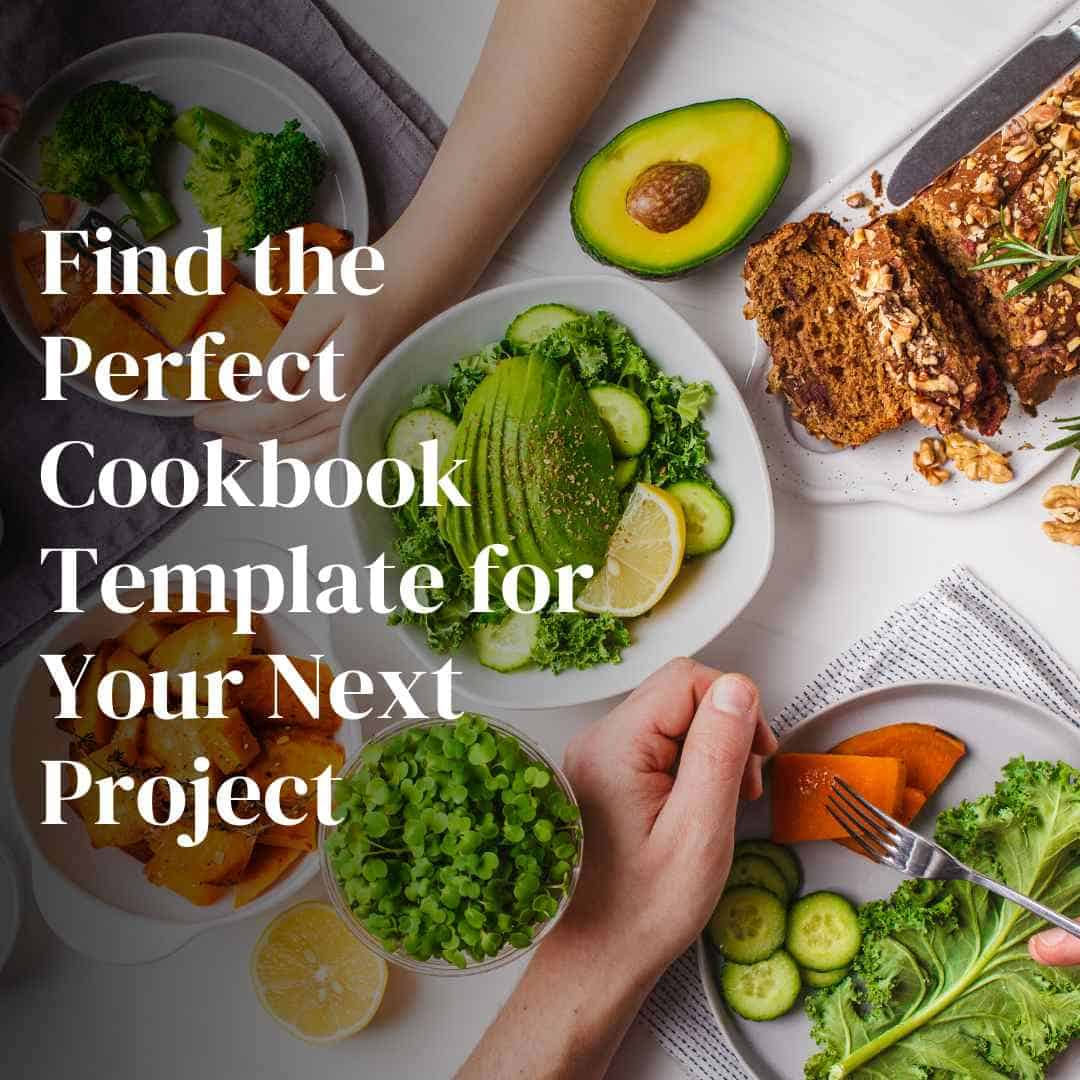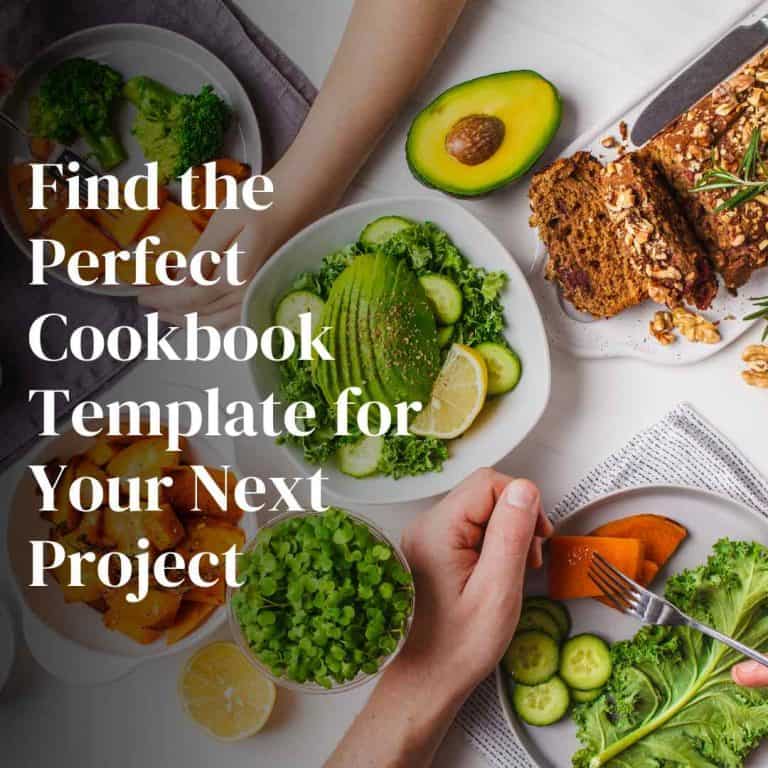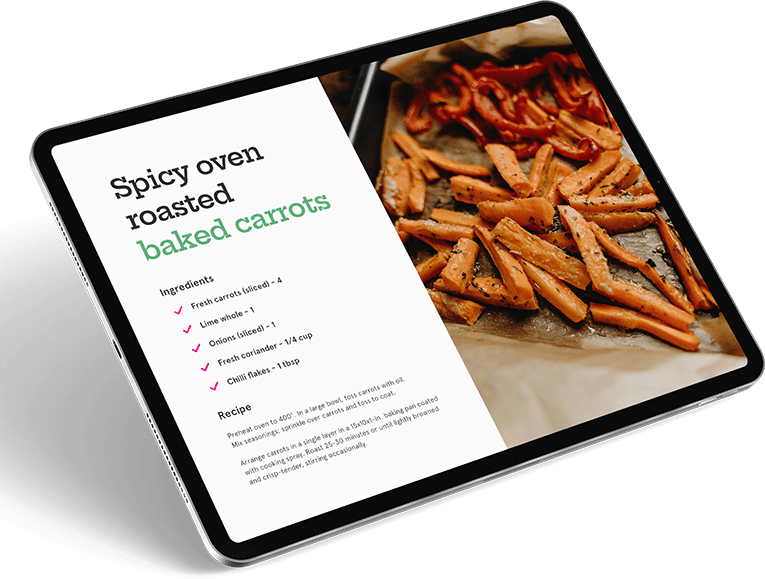People who love cooking tend to accumulate knowledge and expertise through years of honing their craft. You may have experimented with classic recipes and found improvements that made significant differences in the taste of a particular dish.
At some point, you might want to share your recipes and cooking tips with others as a cookbook. Creating a cookbook from scratch can be daunting, but luckily, many excellent resources are available to help you get started.
One of the things that you need is a cookbook template. This will give you a framework to work within as you create your cookbook.
Why Use a Cookbook Template?
A cookbook template is a document that contains the layout, design, and formatting of a cookbook. It’s a starting point for creating a new cookbook and can save you a lot of time and effort in the design process.
It can include everything from the cover design to the layout of recipes and ingredients and can be customized to fit your specific needs. It’s a “recipe” for creating a cookbook, and with a bit of time and effort, you can find the perfect template for your next project.
Factors To Consider in a Cookbook Template
Here are the factors you should consider when choosing a cookbook template:
Trim Size
The trim size of your cookbook will be one of the first things you’ll need to determine. Common cookbook sizes include 5″ x 8″, 6″ x 9″, and 7″ x 10″. Once you’ve decided on trim size, you can begin narrowing down your template options.
This factor is crucial because it will determine the number of pages in your cookbook and how much text and photography you can include on each page. If you have a large amount of content, you’ll need to ensure your chosen template can accommodate it without making your cookbook look crowded or unbalanced. Generally, if you plan the content of your cookbook, it becomes easier for you to choose a suitable size for the cookbook.
Sectioning
A cookbook entails more than just publishing your recipes. It has to be organized in a way that is logical and makes sense to the reader. You should carefully evaluate your requirements to determine whether you need sectioning because it will impact the overall layout and design of the cookbook.
Part of this organization involves sectioning your cookbook. It would help to decide which sections will work best for your book and then find a template with these sections already set up. If you want to have sections for breakfast, lunch, dinner, and dessert recipes, then find a template with these sections. This will save you time and energy in the long run.
Of course, you can always arrange your recipes alphabetically, but that might not make sense for your cookbook. For example, if I wanted to have a section for holiday recipes, I wouldn’t want them scattered throughout the book.
Design and Layout
The design and layout are equally as important as determining the sections included in the template. Your cookbook should be visually appealing and easy to navigate. It should be intuitive for the reader to find what they’re looking for.
If the cookbook is for a specific audience, consider their needs when choosing the layout. For example, if it’s for children, use bright colors and clear font.
The design would depend mainly on the number of recipes, the type of recipes, and the target audience. If your cookbook is image-heavy, make sure there is plenty of white space to give readers’ eyes a break.
Recipe Structure
Some templates have a form for the recipe you have to fill in, which can be helpful if you’re not used to writing out recipes. Others provide more of a blank slate so you can format your recipes. Consider how much structure you need for your recipes. Just make sure that it’s consistent throughout the book for the comfort of readers. It is also possible that you might have different recipes to bring variety to the recipe structure.
Customizability
You also want to consider customizability for a cookbook template because you will likely want to make changes to suit your specific needs. Some cookbook templates are rigid and don’t offer much flexibility, while others are highly customizable.
Finding a template that offers you the right balance of customization options is crucial. After all, it’s your cookbook, and you should be able to make it look however you want.
Things To Remember When Creating Your Cookbook
Once you’ve chosen a cookbook template, don’t forget the following:
Always Proofread
It can be tempting to overlook errors while proofreading your work, but it’s important to remember that even a tiny mistake can reflect poorly on your cookbook. Be sure to take the time to read through your work carefully before sending it off to be printed. Have a fresh pair of eyes go through your work if you must know to be confident that everything looks perfect.
Standardize Your Measurements
One of the most important things to remember is to standardize your measurements. This means using either metric, US standard, or imperial measurements. This will ensure that your recipes can be followed no matter where they are being made.
You can also use one as a base measurement and include the equivalent measures in other types. For example, if a recipe calls for 2 cups of sugar, you could include the metric (500 mL) and imperial (0.9 pint or 17.6 fluid ounces) measurements. However, this can make your recipes more confusing to look at.
Find High-Quality Photos
Aside from your recipes, you should also put a lot of thought into what photos you’ll include in your cookbook. High-quality images are vital to making your book look polished and professional. The quality of the pictures can significantly affect the overall quality and look of the cookbook.
Fortunately, there are a few great places to find stunning food photography. Kitchen Bloggers make food bloggers’ lives easier by providing a varied selection of food content, including high-resolution photos. Our images are licensed, which we can pass to you so that you won’t have to worry about copyright infringement.
License Everything
Speaking of licenses, you should also take the time to license everything in your cookbook. That includes recipes, photos, and any other content you include. There are a few different ways to do this, but using a Creative Commons license is the most common. This will let others know they can use your work if they give you credit.
Takeaway
When beginning a new project, there are plenty of factors to consider, but one of the most critical and often overlooked details is choosing the suitable cookbook template.
With so many options available, it can be hard to know where to start. Just follow the tips above, and you’ll be on your way to finding the perfect cookbook template for your next project in no time. Make sure to research thoroughly and read up on resources like KitchenBloggers to understand better what’s available to you.
Once you have a good grasp of the different cookbook templates, it’ll be much easier to decide. And, with some trial and error, you’re sure to find the perfect one for your needs.
References:
https://www.blurb.com/blog/10-tips-creating-cookbook/
https://redokun.com/blog/cookbook-template
https://www.ingramspark.com/blog/8-tips-for-writing-a-cookbook
https://detoxinista.com/7-things-youll-need-to-write-a-cookbook/



